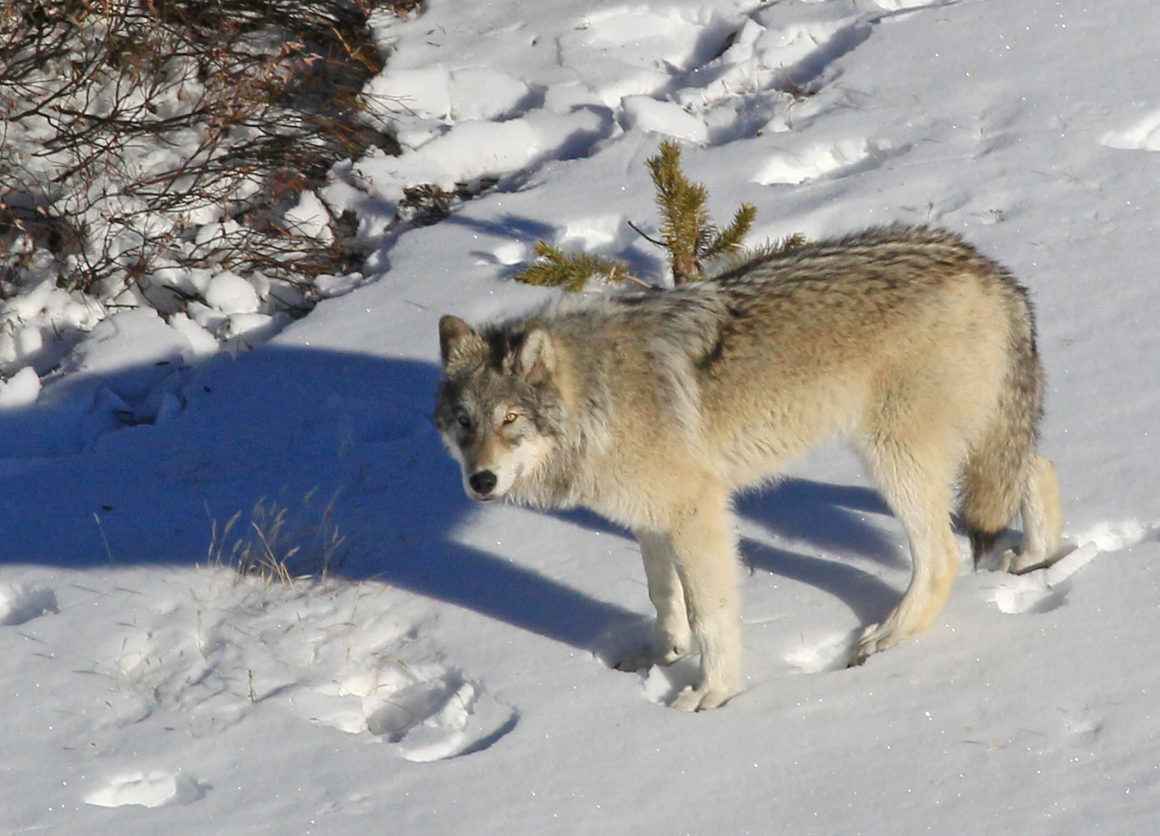
Banff wolf pack survival rests on regulation
By Sean Willett, August 30 2016 —
Over the past summer, two wolves from Banff National Park’s Bow Valley pack have been killed by authorities for acting aggressively towards campers. One of these was the pack’s alpha female. After she was shot, four of the pack’s six cubs were struck and killed by a car. The pack’s alpha male was also hit by a car and is now limping. Another wolf is being pursued by authorities after it was spotted eating garbage in town. The animal will likely be shot when it is found.
The Bow Valley wolf pack has been reduced from five adults with six cubs to three adults with two cubs. Soon this will be two adults. If the alpha male doesn’t recover, it may even drop to one. The pack, which has successfully lived near the Banff township for years, is unlikely to survive the winter.
This is a problem that is bigger than just wolves. And one that Banff needs to start fixing now.
Paul Paquet, an adjunct professor at the University of Calgary, has said the problem is over commercialization in the park. Last year 3.8 million people visited Banff, and that number keeps growing. More people means more development, more waste and more interactions between tourists and wildlife. Paquet claims this has left wildlife with less space and fewer resources, forcing animals like wolves to enter campgrounds and towns in search of food.
Banff officials disagree. They claim resident and visitor behaviour is the problem — by leaving out garbage and food, wolves learn to associate humans with a free meal. This leads to aggressive wolves that are unafraid to approach people and must eventually be put down.
Banff isn’t wrong. If these wolves were not being fed they likely wouldn’t have caused trouble. The Bow Valley pack has successfully lived near large numbers of people for years, and there is no reason to believe they couldn’t continue doing so into the future.
But Paquet isn’t wrong, either. More development in the park has led to more people visiting Banff which means more campsites are used and more garbage that can be left outside. This is the problem. As Banff gets bigger, the challenge of educating tourists and enforcing wildlife laws will continue to grow more difficult.
If Banff wants to continue developing, this is a challenge officials will have to meet. Solving this problem will take more spending and an increased budget, something that should be made possible by the ever-rising number of tourists spending money in the town.
But it will also call for a change in how the park manages its visitors and residents — more rules will have to be created, more fences and overpasses will have to be built, and more areas will have to be put entirely off limits. A thicker, darker line will have to be drawn between people and the wildlife they put in danger.
This prospect may sound upsetting to some. After all, Banff’s ‘wildness’ is a part of what makes the town special for many visitors and residents. There are not many other towns where one could see a herd of elk walk down Main Street or a bear ambling down the side of the highway.
But this type of coexistence demands an extreme level of responsibility and awareness, a level that only rises as more people enter the park. And the state of the Bow Valley wolf pack is evidence enough that this level is not being met.
Sean Willett is a fourth-year natural sciences student and host of conservation podcast The Redlist. He writes a monthly column about environmental issues called Parks and Conservation.
